
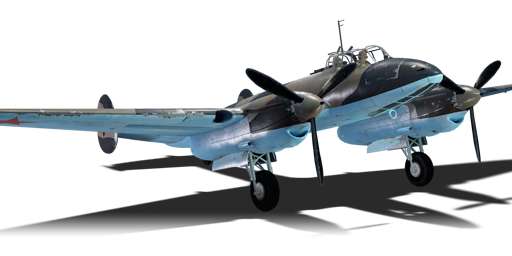


The Pe-2-110 is a Soviet bomber. It has been in the game since the start of the Open Beta Test prior to Update 1.27.
The Pe-2 fulfils much the same attack aircraft role as the IL-2. While the guns are mostly .50 calibre and therefore worse than the IL-2's, it can carry much heavier bombs, allowing it to destroy targets in one hit that an IL-2 might take two or three bombs to destroy. Additionally, its nose-mounted weaponry and fact that it spawns at bomber altitude in most maps make it a surprisingly effective hit&run bomber. However, as in other attack craft, you should have a friendly cover you whenever possible. While it has defensive guns and is faster than the Sturmovik, it is still very vulnerable when caught alone. Additionally, it is very vulnerable to diving attacks due to its dorsal-mounted fuel tank. The inclusion of a 12.7 mm UB machine gun allows with a good aim to destroy tanks and light pillboxes, which can be very useful in certain situations.
The defensive armament on this plane is nothing spectacular and only allows for one to two guns to shot at an incoming airplane at a time. this will not stop most fighters without a lucky hit however it can discourage fighters from making slow approaches onto your tail. As such this plane should always be using its speed to its advantage.
flaps
flaps
flaps
brake
| Belt | Belt filling | Armor penetration (mm) at a distance: | |||||
|---|---|---|---|---|---|---|---|
| 10 m | 100 m | 500 m | 1000 m | 1500 m | 2000 m | ||
| T/AP/AP/IAI | 32 | 30 | 22 | 15 | 11 | 7 | |
| AP-I/API-T/IAI/IAI | 29 | 27 | 20 | 13 | 9 | 6 | |
| API-T/AP-I/AP-I/IAI | 29 | 27 | 20 | 13 | 9 | 6 | |
| AP-I(c)/AP-I/AP-I/API-T/IAI | 34 | 32 | 24 | 17 | 12 | 8 | |
| API-T | 29 | 27 | 20 | 13 | 9 | 6 | |
| AP-I/AP-I/IAI | 29 | 27 | 20 | 14 | 9 | 6 | |
| Belt | Belt filling | Armor penetration (mm) at a distance: | |||||
|---|---|---|---|---|---|---|---|
| 10 m | 100 m | 500 m | 1000 m | 1500 m | 2000 m | ||
| T/Ball/Ball/AP-I/AI | 13 | 12 | 7 | 3 | 2 | 0 | |
| AP-I/AI/API-T | 13 | 12 | 7 | 3 | 2 | 0 | |
| AP-I/API-T | 13 | 12 | 7 | 3 | 2 | 0 | |
| AP-I/AP-I/AP-I/AI | 13 | 12 | 7 | 3 | 2 | 0 | |
| Belt | Belt filling | Armor penetration (mm) at a distance: | |||||
|---|---|---|---|---|---|---|---|
| 10 m | 100 m | 500 m | 1000 m | 1500 m | 2000 m | ||
| T/AP/AP/IAI | 32 | 30 | 22 | 15 | 11 | 7 | |
| API-T/AP/AP/AP-I(c) | 34 | 32 | 24 | 17 | 12 | 8 | |
| API-T/AP-I | 29 | 27 | 20 | 13 | 9 | 6 | |
| Belt | Belt filling | Armor penetration (mm) at a distance: | |||||
|---|---|---|---|---|---|---|---|
| 10 m | 100 m | 500 m | 1000 m | 1500 m | 2000 m | ||
| T/Ball/Ball/AP-I/AI | 13 | 12 | 7 | 3 | 2 | 0 | |
| AP-I/AP-I/AP-I/API-T | 13 | 12 | 7 | 3 | 2 | 0 | |
| API-T/API-T/API-T/AI | 9 | 8 | 6 | 3 | 0 | 0 | |
| Name | Weight | Slot | ||||||||
|---|---|---|---|---|---|---|---|---|---|---|
| 5 × | 211.8 kg |  |  | |||||||
| 5 × | 258 kg | 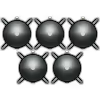 |  | |||||||
| 103.5 kg |  |  |  |  |  |  | ||||
| 226 kg |  |  |  |  | ||||||
| 255 kg |  |  |  |  | ||||||
| 468.6 kg | 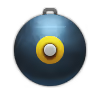 |  | ||||||||
| 510 kg | 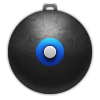 |  | ||||||||
| 4 × | 414 kg | 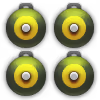 | ||||||||












Flight performance | |
|---|---|
Weaponry | ||
|---|---|---|